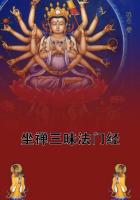One day as he walked in meditation to the furthest point of a tranquil beach, for which rocks jutting out into the sea formed a rugged dam, he saw a trough of stone which floated like a boat upon the waters.
It was in a vessel similar to this that St. Guirec, the great St. Columba, and so many holy men from Scotland and from Ireland had gone forth to evangelize Armorica. More recently still, St. Avoye having come from England, ascended the river Auray in a mortar made of rose-coloured granite into which children were afterwards placed in order to make them strong; St. Vouga passed from Hibernia to Cornwall on a rock whose fragments, preserved at Penmarch, will cure of fever such pilgrims as place these splinters on their heads. St.
Samson entered the Bay of St. Michael's Mount in a granite vessel which will one day be called St. Samson's basin. It is because of these facts that when he saw the stone trough the holy Mael understood that the Lord intended him for the apostolate of the pagans who still peopled the coast and the Breton islands.
He handed his ashen staff to the holy Budoc, thus investing him with the government of the monastery. Then, furnished with bread, a barrel of fresh water, and the book of the Holy Gospels, he entered the stone trough which carried him gently to the island of Hoedic.
This island is perpetually buffeted by the winds. In it some poor men fished among the clefts of the rocks and labouriously cultivated vegetables in gardens full of sand and pebbles that were sheltered from the wind by walls of barren stone and hedges of tamarisk. A beautiful fig-tree raised itself in a hollow of the island and thrust forth its branches far and wide. The inhabitants of the island used to worship it.
And the holy Mael said to them: "You worship this tree because it is beautiful. Therefore you are capable of feeling beauty. Now I come to reveal to you the hidden beauty." And he taught them the Gospel. And after having instructed them, he baptized them with salt and water.
The islands of Morbihan were more numerous in those times than they are to-day. For since then many have been swallowed up by the sea. St. Mael evangelized sixty of them. Then in his granite trough he ascended the river Auray. And after sailing for three hours he landed before a Roman house. A thin column of smoke went up from the roof. The holy man crossed the threshold on which there was a mosaic representing a dog with its hind legs outstretched and its lips drawn back. He was welcomed by an old couple, Marcus Combabus and Valeria Moerens, who lived there on the products of their lands. There was a portico round the interior court the columns of which were painted red, half their height upwards from the base. A fountain made of shells stood against the wall and under the portico there rose an altar with a niche in which the master of the house had placed some little idols made of baked earth and whitened with whitewash. Some represented winged children, others Apollo or Mercury, and several were in the form of a naked woman twisting her hair. But the holy Mael, observing those figures, discovered among them the image of a young mother holding a child upon her knees.
Immediately pointing to that image he said:
"That is the Virgin, the mother of God. The poet Virgil foretold her in Sibylline verses before she was born and, in angelical tones he sang Jam redit et virgo. Throughout heathendom prophetic figures of her have been made, like that which you, O Marcus, have placed upon this altar. And without doubt it is she who has protected your modest household. Thus it is that those who faithfully observe the natural law prepare themselves for the knowledge of revealed truths."
Marcus Combabus and Valeria Moerens, having been instructed by this speech, were converted to the Christian faith. They received baptism together with their young freedwoman, Caelia Avitella, who was dearer to them than the light of their eyes. All their tenants renounced paganism and were baptized on the same day.















